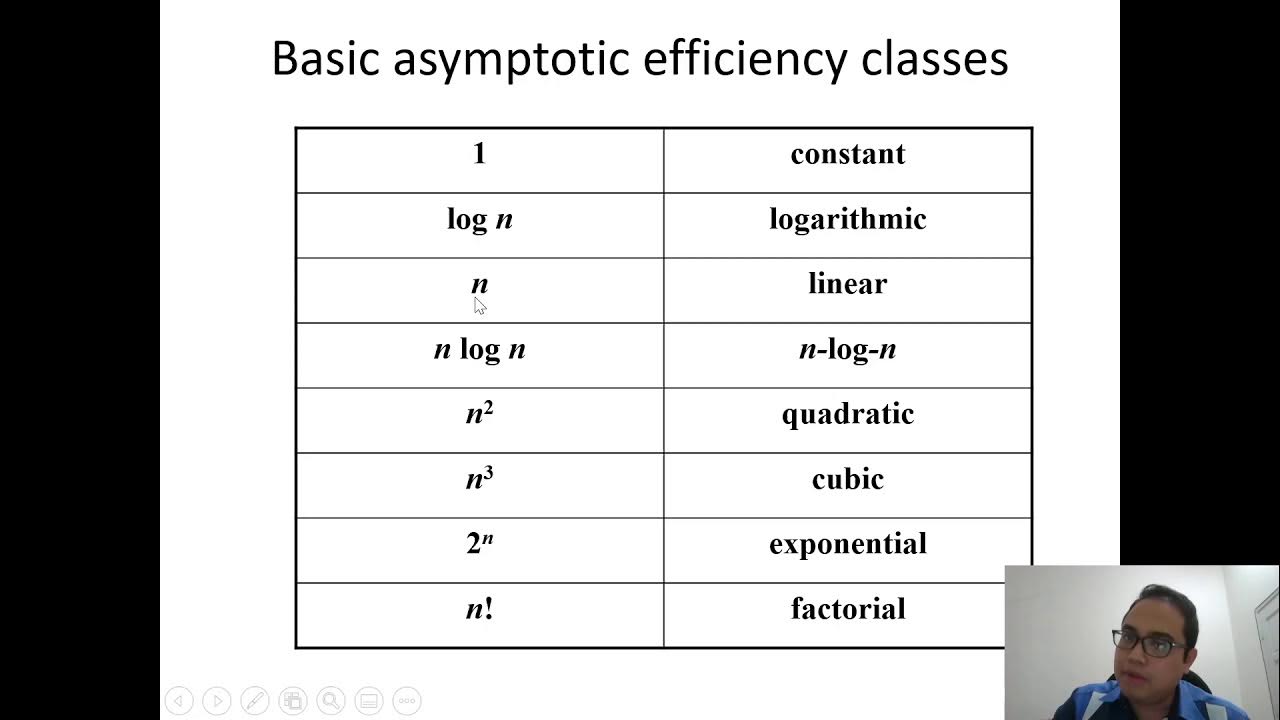Lecture 22: Kernighan – Lin (KL) Algorithm
Summary
TLDRThis lecture introduces the Kernighan-Lin (KL) algorithm for VLSI Physical Design with Timing Analysis. It outlines the algorithm's steps, including initial partitioning, calculating cost functions, and iteratively swapping nodes to optimize partitioning. An example illustrates the process, demonstrating how to calculate 'D' values and 'delta G' for maximum gain, leading to a more efficient circuit partition. The lecture concludes with a discussion on the KL algorithm's time complexity, which is O(n^3), highlighting its significance in reducing cut costs and improving circuit design.
Takeaways
- 📘 The lecture introduces the Kernighan-Lin (KL) algorithm, a method used in VLSI Physical Design for circuit partitioning with timing analysis.
- 🔍 The KL algorithm is a multi-step process that begins with an initial partition and aims to minimize the cut cost by iteratively swapping nodes between partitions.
- 🔢 The algorithm calculates a cost function 'd(v)' for each node 'v' to determine the balance of edges cut by the partition, which is crucial for evaluating potential node swaps.
- 🔄 A key component of the KL algorithm is the 'gain' function, denoted as delta G(k), which is used to measure the potential reduction in cut cost from swapping nodes.
- 🔝 The algorithm seeks to maximize delta G(k) by selecting the pair of nodes that provide the highest gain, thus reducing the overall cut cost.
- ⏱️ The KL algorithm's efficiency is determined by two main factors: the evaluation of 'd' values and the computation of gain updates.
- 🔁 The process iterates, with each iteration potentially fixing nodes that no longer need to be considered for swapping, thus reducing the computational load in subsequent iterations.
- 📉 The algorithm continues until no further reduction in cut cost is possible, at which point all nodes are considered fixed, and the partitioning is complete.
- 📊 The lecture provides a detailed example demonstrating the step-by-step application of the KL algorithm, including the calculation of 'd' values and the determination of the best node pairs to swap.
- ⏳ The time complexity of the KL algorithm is O(n^3), primarily due to the gain evaluation process, which involves summing over a series that results in a cubic relationship with the number of nodes.
Q & A
What is the Kernighan-Lin (KL) algorithm?
-The Kernighan-Lin (KL) algorithm is a heuristic algorithm used for partitioning a graph into two subgraphs with the goal of minimizing the number of edges that cross the partition, known as the cut cost.
What are the steps involved in the KL algorithm?
-The KL algorithm involves several steps including initializing partitions, calculating cost functions, finding maximum gain for node swaps, fixing nodes, and iterating until no further improvements can be made.
How is the initial partition defined in the KL algorithm?
-In the KL algorithm, the initial partition is defined with two sets, A and B, each containing an equal number of nodes, typically n nodes in each set.
What does the cost function 'd(v)' represent in the KL algorithm?
-The cost function 'd(v)' represents the difference between the number of edges of a node 'v' that cross the partition and those that do not.
What is meant by 'delta G of k' in the KL algorithm?
-'Delta G of k' is a cost function that measures the gain achieved by swapping two nodes between partitions A and B, defined as the sum of 'd(a)' and 'd(b)' minus twice 'c(a, b)', where 'c(a, b)' is the cost of edges between nodes a and b.
How does the KL algorithm decide which nodes to swap?
-The KL algorithm decides which nodes to swap by finding the combination that yields the maximum 'delta G of k', indicating the highest potential gain in reducing the cut cost.
What is the purpose of fixing nodes in the KL algorithm?
-Fixing nodes in the KL algorithm means that they will not be considered for swapping in future iterations, which helps to progressively converge towards an optimal partition.
What is the significance of the 'move sequence' in the KL algorithm?
-The 'move sequence' in the KL algorithm is a series of node swaps that are accumulated to determine the overall gain after each iteration, guiding the decision to continue or terminate the algorithm.
How does the KL algorithm determine when to terminate?
-The KL algorithm terminates when the overall gain 'Gm' becomes non-positive, indicating that no further reduction in cut cost can be achieved with additional swaps.
What is the time complexity of the KL algorithm?
-The time complexity of the KL algorithm is O(n^3), which is determined by the number of times the gain function 'delta G' is evaluated, which happens in the order of n^2 times for each of the n iterations.
Outlines

This section is available to paid users only. Please upgrade to access this part.
Upgrade NowMindmap

This section is available to paid users only. Please upgrade to access this part.
Upgrade NowKeywords

This section is available to paid users only. Please upgrade to access this part.
Upgrade NowHighlights

This section is available to paid users only. Please upgrade to access this part.
Upgrade NowTranscripts

This section is available to paid users only. Please upgrade to access this part.
Upgrade NowBrowse More Related Video

PD Lec 7 - Physical Design Inputs Overview | Tutorial | VLSI | Physical Design

The best ROADMAP to get into the Semiconductor Industry | Projects level wise | Resources to study

PD Lec 9 - Timing Library | libs | PD Inputs part-3 | VLSI | Physical Design

PD Lec 8 - Netlists | PD Inputs part-2 | VLSI | Physical Design

PD Lec 67 - Global and Detail Routing | VLSI | Physical Design

CSC645 - Chapter 1 (Continued) - Fundamentals of Algorithm Analysis
5.0 / 5 (0 votes)